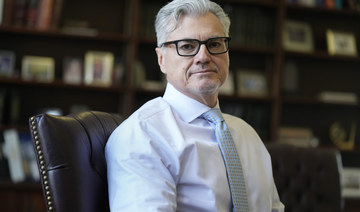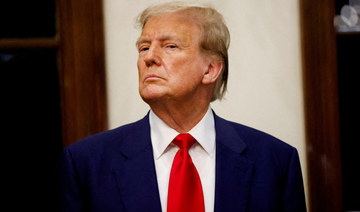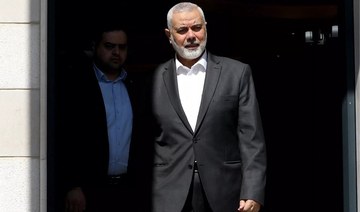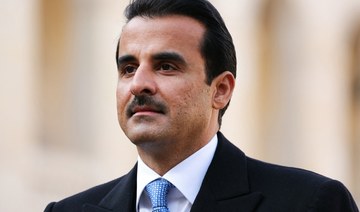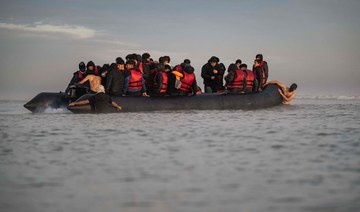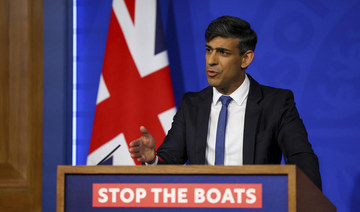ROME: Italy reported a 45% one-day increase in people infected with the coronavirus as other countries in Europe recorded their first cases Tuesday, producing evidence that travelers are carrying the virus from the European outbreak’s current epicenter.
Italian officials reported 11 deaths and 322 confirmed cases of the virus, 100 more than a day earlier. While the majority were concentrated in northern Italy, some of the new cases showed up in parts of Italy well outside the country’s two hard-hit regions, including three in Sicily, two in Tuscany and one in Liguria.
An Italian couple from the afflicted north tested positive in the Canary Islands off Africa, forcing the quarantine of their hotel in what one guest said felt like being “monkeys in a cage.” Austria, Croatia and Switzerland reported their first cases, all in people who recently traveled to Italy.
The four new deaths in Italy, like the seven reported earlier, were in patients who were elderly, suffering from other ailments, or both, officials said.
Italian Premier Giuseppe Conte defended the measures Italy has taken to contain the outbreak and predicted a stabilizing of numbers soon. But he acknowledged that the rise in cases — the most outside Asia — was “worrisome.”
“Obviously I can’t say I’m not worried because I don’t want anyone to think we’re underestimating this emergency,” he said before a meeting with a visiting World Health Organization mission. “But we trust that with the measures we’ve implemented there will be a containing effect in the coming days.”
Italy has closed schools, museums and theaters in the two regions where clusters have formed and troops are enforcing quarantines around 10 towns in Lombardy and the epicenter of the Veneto cluster, Vo’Euganeo.
But Italy hasn’t yet identified the source of the outbreak. Angelo Borrelli, the head of the Italian civil protection department, said the increase in cases from 222 to 322, representing a 45% increase, came from people who tested positive for the virus in a 24-hour period from Monday evening to Tuesday evening.
The southern island of Sicily reported its first three positive cases from a woman vacationing from Bergamo, in Lombardy and two others traveling with her. Two cases were also reported in Tuscany, south out of the epicenter.
Spain counted three active cases: a woman in Barcelona who had been in Lombardy in recent days, and a doctor from northern Italy and his partner who were vacationing in Tenerife, in the Canary Islands.
The hotel where the couple was staying, the H10 Adeje Palace was locked down after they tested positive for the virus and 1,000 tourists prevented from leaving, according to Spanish news media and town officials in Adeje.
“We do remain patient but we haven’t had anything to eat and drink at the hotel today,” Harriet Strandvik, the mother in a family of four stuck at the hotel, told Finnish newspaper Ilta-Sanomat. “We feel a little bit like monkeys in a cage here as there are media representatives present near the hotel and police officers guarding the area are wearing masks.”
The Canary Islands, an archipelago located around 100 kilometers (60 miles) west of the African coast, is a popular vacation destination that attracts Europeans year-round. Many Italians are vacationing this week as schools have a mid-winter break.
Conte shocked Lombardy officials by taking to task the hospital in Codogno, southeast of Milan, where Italy’s first positive patient went on Feb. 18 with flu-like symptoms. The man was sent home, only to return a short time later with worsening conditions, at which point he was tested for the virus.
Many of Lombardy’s 200-plus positive tests have a traceable connection to the Codogno hospital, including several doctors and nurses, patients and relatives who visited them.
Conte told reporters that the Lombardy cluster grew “because of the hospital management that wasn’t completely proper according to the protocols that are recommended for these cases.”
“This surely contributed to the spread,” he said.
Lombardy’s chief health official, Giulio Gallera, expressed shock at Conte’s remarks and defended the region’s handling of the crisis.
“It’s offensive. It’s unacceptable,” Gallera said, noting that the man presented none of the main risk factors for the virus — travel to China or contact with an infected person — when he first went to the emergency room.
The man was eventually tested after doctors ascertained from his wife that he had met with someone who had recently returned from China. But officials have excluded that contact as the source of the outbreak since that person tested negative.
As officials worked to get ahead of the spread nationally, the reality of a two-week quarantine was setting in for residents of Italy’s isolated “red zones” — the cluster of 10 towns in Lombardy and Veneto’s tiny Vo’Euganeo.
“The concern is palpable, people are worried, partly because of what they hear on television, information, on social media,” said Davide Passerini, the mayor of Fombio, one of the Lombardy towns under lockdown. “Life is like it is in other isolated villages: Everything is shut, people go out just to do their shopping.”
And they wait to see if they develop symptoms.
Italy initially tested anyone who came into contact with an infected person. But with the numbers growing and supply issues with test kits, masks and protective gear, Italy’s national health system revised its containment strategies.
People who live or have visited the quarantined areas, or who who have been in contact with positive cases, are advised to self-quarantine for two weeks. They are instructed to take their temperatures twice a day, and stay in touch with their doctors or the national health service via an overwhelmed toll-free number.
Only if they develop symptoms are they tested, most often by a team performing house calls to prevent hospitals and clinics being overly stressed, said Elia Delmiglio, mayor of Casalpusterlengo, another of the 10 towns in Lombardy’s “red zone.”
“Local health structures are doing their best, but in some cases they were not ready to face such an emergency,” Delmiglio said.
The town — with more than 15,000 inhabitants — doesn’t have a working emergency room, only a hospital mainly specializing in cancer patients, who are particularly at risk for contracting the virus.
In another hotbed of the virus outbreak — Veneto’s tiny town of Vo’Euganeo, which has most of Veneto’s 43 cases — local authorities were still planning to test all 3,300 residents and 600 acting hospital staff.
“I’m being optimistic and I feel well,” said resident Andrea Casalis, as he waited to be tested. “People continue to go out here and talk in the streets, but we try to keep some security distance.”
Tuesday sees Italy virus cases rise 45%; 11 dead
https://arab.news/g2edd
Tuesday sees Italy virus cases rise 45%; 11 dead
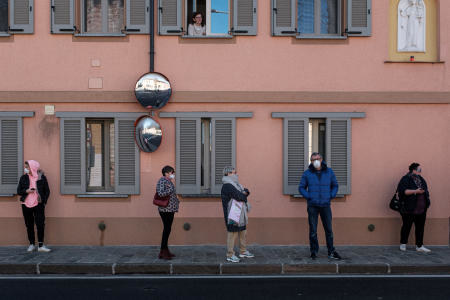
- Infections in other European countries traced to people who had recently travelled to Italy
- The country has the most confirmed cases in Europe
A Russian strike on Kharkiv’s TV tower is part of an intimidation campaign, Ukraine’s Zelensky says

“Four priorities are key: defense of the sky, modern artillery, long-range capacity, and to ensure that packages of American aid arrive as soon as possible,” Zelensky said
KYIV: Ukrainian President Volodymyr Zelensky said a Russian missile strike that smashed a prominent skyline television tower in Kharkiv was part of the Kremlin’s effort to intimidate Ukraine’s second-largest city, which in recent weeks has come under increasingly frequent attack.
The strike sought to “make the terror visible to the whole city and to try to limit Kharkiv’s connection and access to information,” Zelensky said in a Monday evening address.
The northeastern Kharkiv region straddles the approximately 1,000-kilometer (600-mile) front line where Ukrainian and Russian forces have been locked in battle for more than two years since Moscow’s full-scale invasion of Ukraine. The front line has changed little during a war of attrition, focused mostly on artillery, drones and trenches.
Since late March, Russia has stepped up the pressure on Kharkiv, apparently aiming to exploit Ukraine’s shortage of air defense systems. It has pounded the local power grid and hit apartment blocks.
On Monday, a Russian Kh-59 missile struck Kharkiv’s 250-meter (820-foot) -high TV tower, breaking it roughly in half and halting transmissions.
A Washington think tank said Russia may be eyeing a ground assault on Kharkiv.
“The Kremlin is conducting a concerted air and information operation to destroy Kharkiv City, convince Ukrainians to flee, and internally displace millions of Ukrainians ahead of a possible future Russian offensive operation against the city or elsewhere in Ukraine,” the Institute for the Study of War said in an assessment.
The expected arrival in Ukraine in coming weeks of new military aid from its Western partners possibly has prompted Russia to escalate its attacks before the help arrives, the ISW said, adding that trying to capture Kharkiv would be “a significant challenge” for the Kremlin’s forces.
Instead, the Russian military command “may attempt to destroy Kharkiv City with air, missile, and drone strikes and prompt a large-scale internal displacement of Ukrainian civilians,” it said.
The US Senate was returning to Washington on Tuesday to vote on $61 billion in war aid to Ukraine after months of delays. Zelensky said US President Joe Biden assured him the aid would include long-range and artillery capabilities.
“Four priorities are key: defense of the sky, modern artillery, long-range capacity, and to ensure that packages of American aid arrive as soon as possible,” Zelensky said.
Also Tuesday, Britain pledged 500 million pounds ($620 million, 580 million euros) in new military supplies for Ukraine, including 400 vehicles, 60 boats, 1,600 munitions and 4 million rounds of ammunition.
The shipment will also include British Storm Shadow long-range missiles, which have a range of about 150 miles (240 kilometers) and have proven effective at hitting Russian targets, the British government said.
British Prime Minister Rishi Sunak spoke with Zelensky on Tuesday morning to confirm the new assistance. He was due to announce the aid later Tuesday during a visit to Warsaw where he was meeting with Polish Prime Minister Donald Tusk and NATO Secretary General Jens Stoltenberg.
Less cheering news came from the European Union, however. EU countries that have Patriot air defense systems gave no clear sign Monday that they might be willing to send them to Ukraine, which is desperately seeking at least seven of the missile batteries.
Ukraine’s army is also heavily outnumbered in the fight, and expanding the country’s mobilization has been a delicate issue.
Ukrainian Foreign Minister Dmytro Kuleba on Tuesday signaled that authorities plan to clamp down on young men of conscription age who have moved abroad, with details of the specific measures to be made public soon.
“Staying abroad does not relieve a citizen of his or her duties to the homeland,” Kuleba said on the social media platform X.
Meanwhile, Russia launched 16 Shahed drones and two Iskander-M ballistic missiles over Ukraine’s southern and central regions, the Ukrainian air force said Tuesday morning. It said all but one of the drones were intercepted.
In Odesa, an overnight attack injured nine people, regional Gov. Oleh Kiper said. Among those injured were two infants and two children aged nine and 12, Kiper said. City mayor Hennadii Trukhanov said 58 apartments in 22 buildings were damaged.
In other developments:
A Russian missile strike near Dnipro, Ukraine’s fourth-largest city, injured four people who were admitted to hospital, regional Gov. Serhii Lysak said.
Russian forces dropped a guided aerial bomb in Kostiantynivka, a city in the eastern Donetsk region, injuring five people who were riding in a car, police said. Two of them were in critical conditions.
Trump to meet with senior Japanese official after court session Tuesday in hush money trial
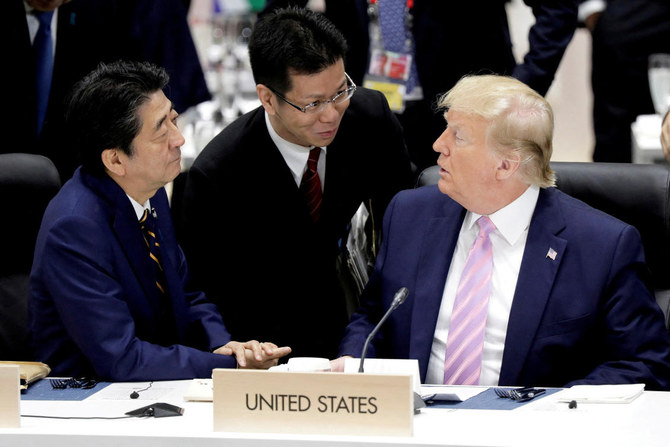
- “Leaders from around the world know that with President Trump we had a safer, more peaceful world,” said Trump spokesperson Brian Hughes
- Trump met last week with Polish President Andrzej Duda at Trump Tower and also met recently with British Foreign Secretary David Cameron and Hungarian Prime Minister Viktor Orbán
WASHINGTON: Former President Donald Trump is meeting with another foreign leader while he’s in New York for his criminal hush money trial.
The presumptive GOP nominee will host former Japanese Prime Minister Taro Aso at Trump Tower Tuesday, according to two people familiar with the plans who spoke on condition of anonymity because they had not been formally announced.
Aso is just the latest foreign leader to spend time with Trump in recent weeks as US allies prepare for the possibility that he could win back the White House this November.
“Leaders from around the world know that with President Trump we had a safer, more peaceful world,” said Trump spokesperson Brian Hughes in a statement. “Meetings and calls from world leaders reflect the recognition of what we already know here at home. Joe Biden is weak, and when President Trump is sworn in as the 47th President of the United States, the world will be more secure and America will be more prosperous.”
Trump met last week with Polish President Andrzej Duda at Trump Tower and also met recently with British Foreign Secretary David Cameron and Hungarian Prime Minister Viktor Orbán.
Trump was close with Shinzo Abe, the former Japanese prime minister who was assassinated in 2022. Aso is vice president of the Japanese Liberal Democratic Party and also served as deputy prime minister and finance minister under Abe.
Trump has threatened to impose broad new tariffs if he wins a second term.
Early Tuesday morning, he complained about the US dollar reaching a new high against the Japanese yen, calling it “a total disaster for the United States.”
“When I was President, I spent a good deal of time telling Japan and China, in particular, you can’t do that,” he wrote on his Truth Social platform. “It sounds good to stupid people, but it is a disaster for our manufacturers and others.”
The US dollar is trading at above 150 yen recently, up from 130-yen mark a year ago, which has made it more costly for Japan to import goods but has boosted exports.
President Joe Biden hosted current Japanese Prime Minister Fumio Kishida at the White House for talks and a state dinner earlier this month. During the visit, the leaders announced plans to upgrade US-Japan military relations, with both sides looking to tighten cooperation amid concerns about North Korea’s nuclear program and China’s increasing military assertiveness in the Pacific.
Bangladesh, Qatar sign 10 cooperation deals during emir’s first Dhaka trip
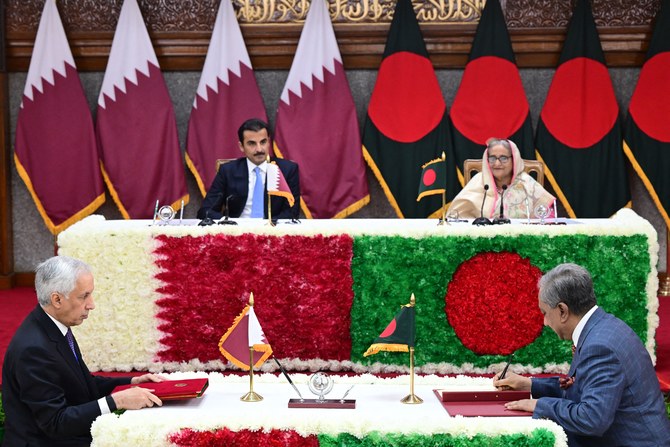
- Agreements cover investment, maritime transport and establishment of joint business council
- Bangladeshi president invited Qatar’s emir to invest in the country’s special economic zones
DHAKA: Bangladesh and Qatar signed 10 cooperation agreements on Tuesday as the Gulf state’s Emir Sheikh Tamim bin Hamad Al-Thani made his first official visit to Dhaka.
Prime Minister Sheikh Hasina and Sheikh Tamim witnessed the signing ceremony, which covered deals on investment, maritime transport, taxation, legal affairs and the establishment of a Bangladesh-Qatar joint business council.
The two countries also signed several memoranda of understanding, including on diplomatic training, education, labor, youth and sports, as well as port management cooperation.
Sheikh Tamim then held a meeting with President Mohammed Shahabuddin as part of his visit to Bangladesh, which is the second stop in the emir’s Asia tour that began in the Philippines on Sunday.
During their talks, Shahabuddin invited Qatar to invest in Bangladesh’s special economic zones.
“Bangladesh will welcome investments in various sectors including in state-led food supply chains from production to consumption such as agro-production and processing, food packaging, smart agriculture and fertilizer production,” Shahabuddin’s press secretary Joynal Abedin told reporters after the meeting.
“Qatar investors can get massive incentives and support in sectors like petrochemicals, energy, machineries, information technology, electronics, ceramics, agri-business, and food processing in Bangladesh.”
Shahabuddin also urged Sheikh Tamim to recruit more skilled workers from Bangladesh during their talks, Abedin said.
Qatar is currently the largest supplier of liquefied natural gas to Bangladesh. Earlier this year, the emirate signed a 15-year agreement with the US-based Excelerate Energy to supply 1 million metric tons per year of LNG to Bangladesh starting from January 2026.
The Gulf state is also home to about 400,000 Bangladeshis who live and work there, as it is one of the preferred destinations for migrant workers from the South Asian country.
India’s Modi calls rivals pro-Muslim as election campaign changes tack
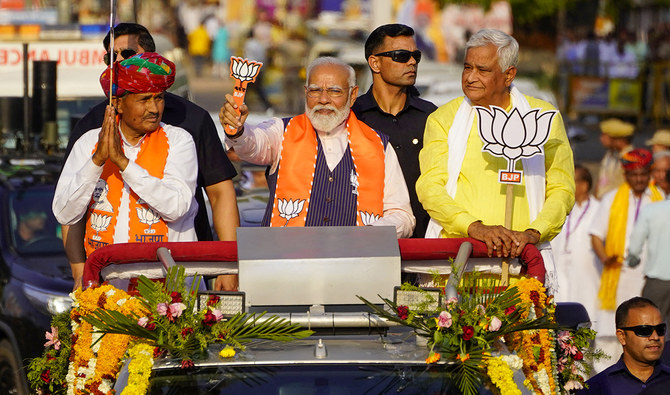
- Modi has accused Congress of having an election plan to redistribute wealth of Hindus among Muslims
- Modi’s government has repeatedly been accused of discrimination against India’s estimated 200 million Muslims
NEW DELHI: Indian Prime Minister Narendra Modi and his Hindu nationalist party have begun attacking opposition rivals, saying they favor minority Muslims, in what analysts see as a bid to invigorate their hard-line base after general elections began last week.
India began voting on Friday in a seven-phase election at which Modi seeks a rare third consecutive term, with campaigning that had so far largely focused on his record of growth and welfare as well as his personal popularity.
But in a speech on Sunday, Modi referred to Muslims as “infiltrators” who have “more children,” linking the comment to what he called an election plan of the main opposition Congress party to redistribute the wealth of Hindus among Muslims.
The Congress denied making any such promise and petitioned the Election Commission to act against Modi, who surveys suggest will win a comfortable majority, though analysts say his party wants to avert possible voter fatigue and overconfidence.
The controversial remarks were an unusual “deviation” from Modi’s usual practice as he rarely targets Muslims directly, said Hilal Ahmed, a political analyst at Delhi’s Center for the Study of Developing Societies.
They followed low voter turnout in areas where the BJP had done well in 2019, he added.
“The low turnout simply means that the committed BJP voter has not yet come out,” Ahmed said. “They obviously want the committed voter to come out. That is the reason for this deviation.”
The comment on redistribution of wealth to Muslims was supported and amplified on Monday by BJP members, including Modi’s powerful cabinet colleague, Home Minister Amit Shah, who mentioned it in a campaign speech.
Modi aired the claim again on Tuesday, a day after speaking about the gains Muslims have made during his 10-year rule.
In the southern state of Karnataka, half of which votes on Friday in the second phase of elections, BJP members have staged protests against last week’s murder of a Hindu woman by a Muslim man.
They say the incident is an instance of “love jihad,” a term Hindu groups use to accuse Muslim men of waging a campaign that lures Hindu women to convert to Islam with promises of marriage.
EXPOSING OPPOSITION, BJP SAYS
Modi’s government has repeatedly been accused of targeting and discrimination against India’s estimated 200 million Muslims, who form the world’s third-largest Muslim population.
The government has denied all accusations, and Modi has said he works for the betterment of all.
“Stating facts and exposing the flawed strategy of the opposition is our job,” BJP president J.P. Nadda told Reuters, when asked about Modi’s weekend comments.
But he said the BJP remained committed to its slogan of betterment, underlining reforms pushed by Modi’s government to help Muslim women and the poor among the community.
Another senior BJP leader and member of the party’s central election panel said Modi’s Sunday comments should not be seen as “polarizing,” as he had only reminded voters about the “Muslim-first strategy” of Congress and its allies.
He spoke on condition of anonymity as he was not authorized to speak to the media.
In January, Modi inaugurated a grand temple to the Hindu god-king Lord Ram on a once-disputed site believed to be his birthplace, fulfilling a longstanding promise projected by the BJP as a symbol of Hindu rejuvenation.
In campaign speeches Modi refers to the temple, but he has focused more on his development and welfare record and national pride to counter the opposition focus on joblessness, price rise and rural distress in the world’s fastest growing major economy.
“When the campaign started, the focus was entirely on development, welfare, reaching out to marginalized people and Hindutva came last,” said analyst Ahmed, referring to the Hindu nationalism espoused by the BJP.
“After the first phase, they realized they need to go back to their own voters ... back to the basics.”
16 dead, 28 missing in migrant boat capsize off Djibouti: UN
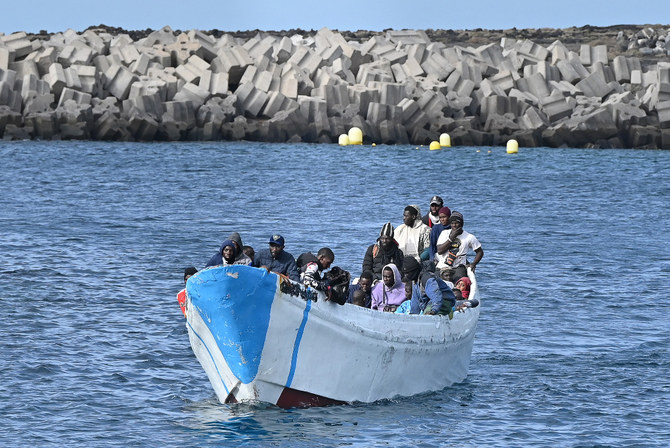
- The accident occurred about two weeks after another boat carrying mainly Ethiopian migrants sank off the Djibouti coas
NAIROBI: At least 16 people are dead and 28 missing in a new migrant boat disaster off the coast of the Horn of Africa nation of Djibouti, the UN’s International Organization for Migration said on Tuesday.
The accident occurred about two weeks after another boat carrying mainly Ethiopian migrants sank off the Djibouti coast, claiming several dozen lives.
“Tragedy as boat capsizes off Djibouti coast with 77 migrants on board including children,” the IOM said in a post on X, without specifying when the latest incident occurred.
“At least 28 missing. 16 dead,” it said, adding that the local IOM branch was “supporting local authorities with search and rescue effort.”
It was the latest deadly accident on the so-called Eastern Migration Route.
Another boat carrying more than 60 people sank off the coast of Godoria in the northeast of Djibouti on April 8, according to the IOM and the Ethiopian embassy in Djibouti.
The IOM said at the time the bodies of 38 migrants, including children, were recovered, while another six people were missing.
The embassy in Djibouti said the boat was carrying Ethiopian migrants from Djibouti to war-torn Yemen.
Each year, many tens of thousands of African migrants brave the perilous “Eastern Route” across the Red Sea and through war-scarred Yemen, escaping conflict or natural disaster, or seeking better economic opportunities.





